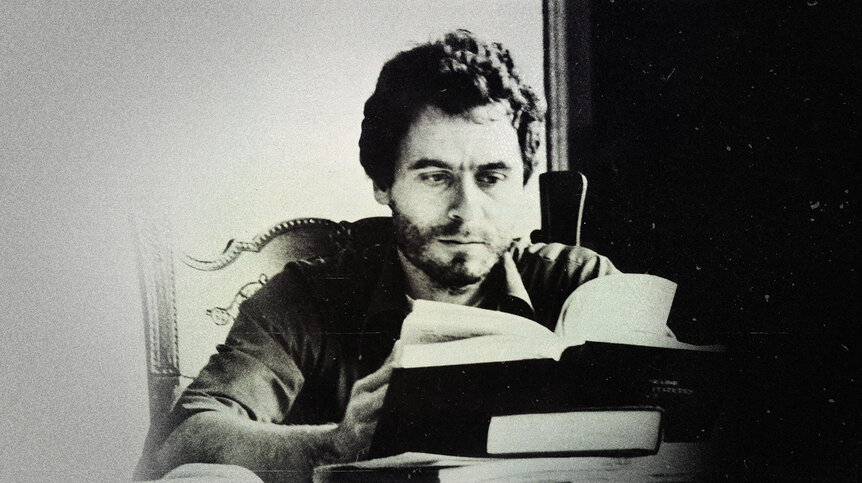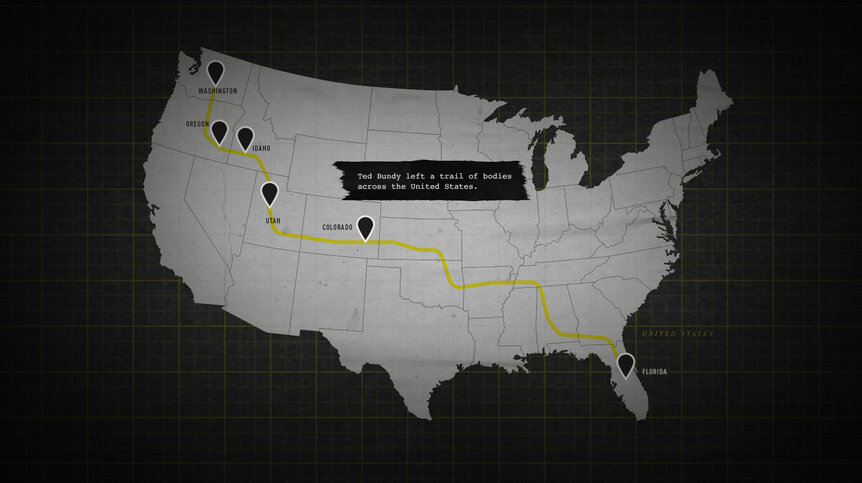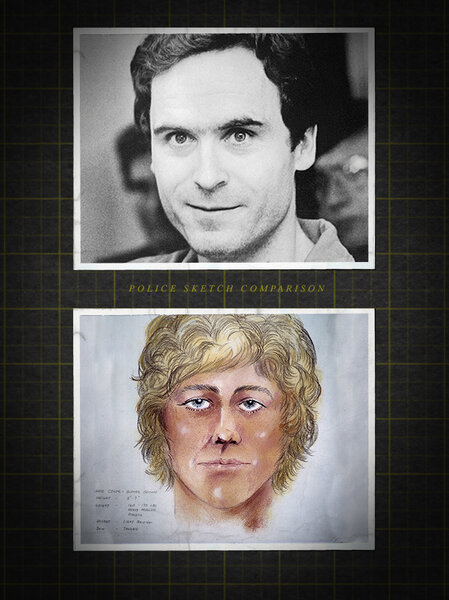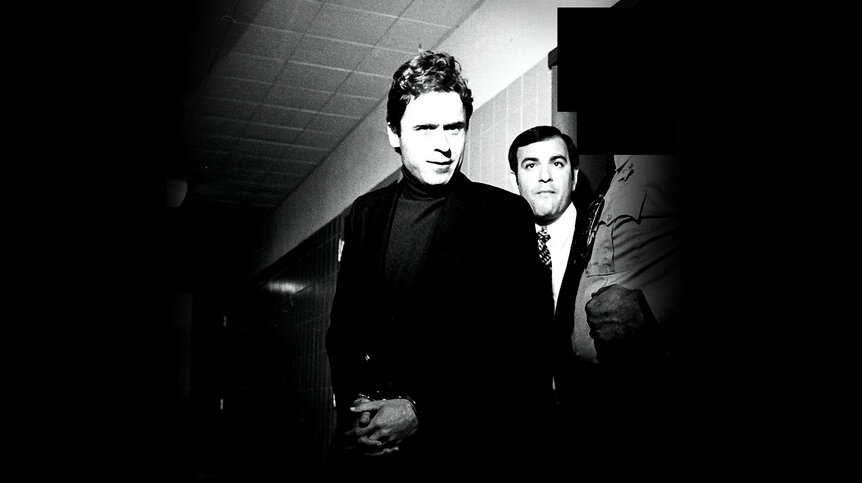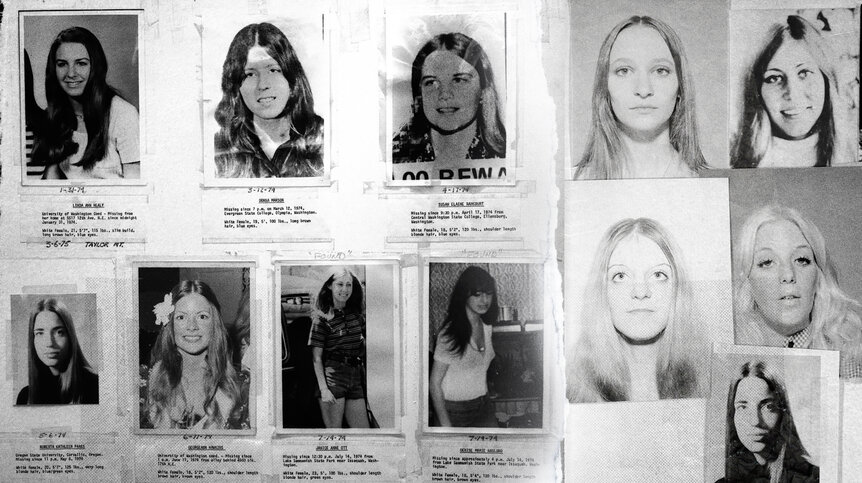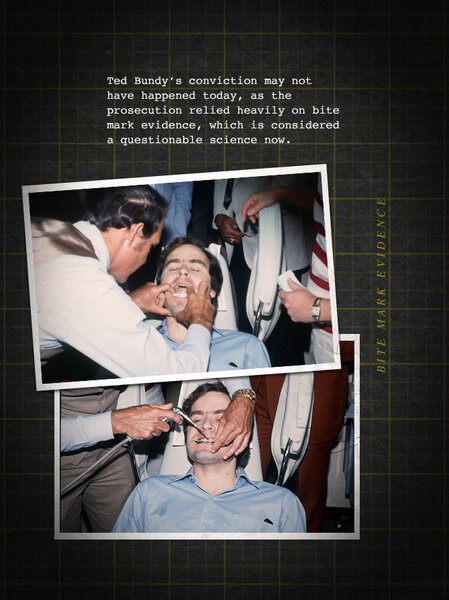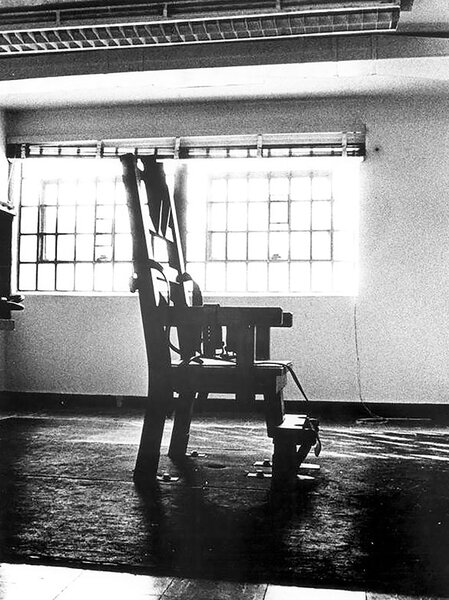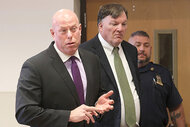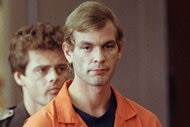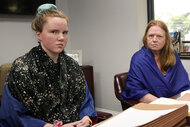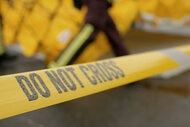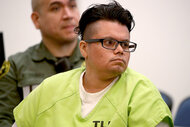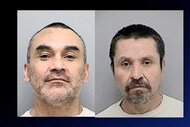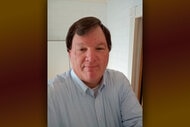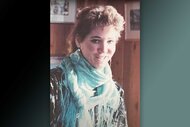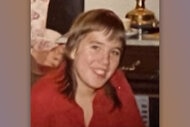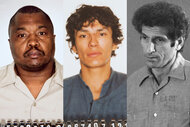Create a free profile to get unlimited access to exclusive videos, breaking news, sweepstakes, and more!
Bite Marks And Prison Escapes — What Led To The Capture And Conviction Of Ted Bundy
Ted Bundy killed at least 30 women across the country during the '70s.
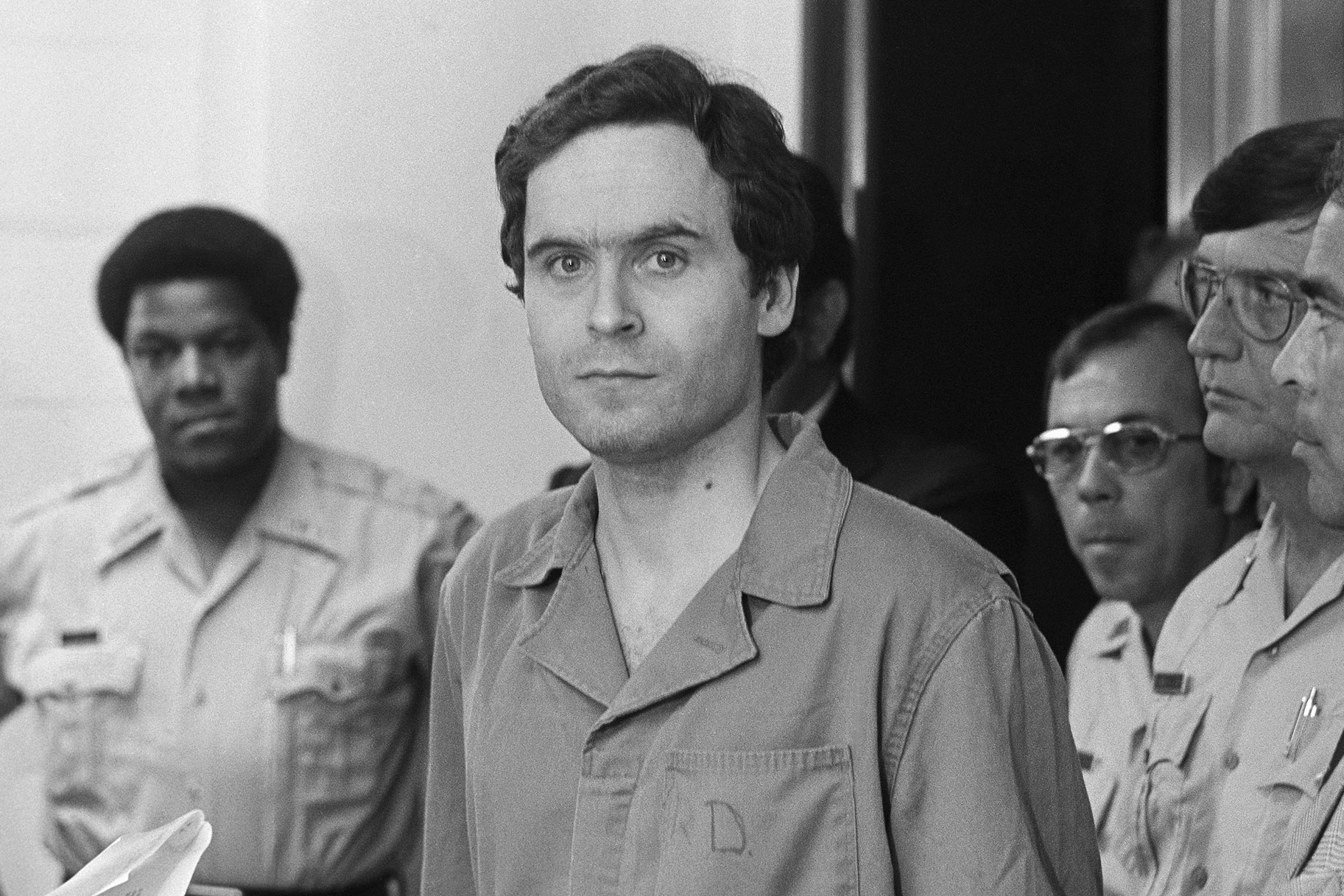
Any discussion of serial killers is bound to include Ted Bundy. Somehow, this man, described by those who knew him as good-looking and charismatic, was responsible for perhaps the most notorious killing spree in the U.S.
Yet Bundy, who is the focus of "Snapped: Notorious: Ted Bundy," which will be re-airing as part of Oxygen's Serial Killer Week, a special nine-night event diving into the most fearsome and fascinating criminals of all time from Saturday, April 10 to Sunday, April 18 on Oxygen, is far from the most prolific serial killer in the United States. His methods of murder likely aren't the most gruesome or macabre ever (no cannibalism or mobile torture chambers, for example). He didn't keep a house full of human bones and flesh like Ed Gein or Jeffrey Dahmer. So why is Bundy so famous?
Well, part of the answer may be because the story of his eventual capture was so wild and bizarre: Bundy gathered national headlines for his shocking arrest, his multiple prison escapes, a gruesome final spree in Florida, and his showboating antics during his trials.
Here's what to know about Bundy:
Who Was Ted Bundy?
Ted Bundy was born in Burlington, Vermont in 1946. He grew up initially believing his grandparents were his parents, but his mother was actually an unmarried young woman, Eleanor Cowell. The identity of his father has never been revealed. Bundy eventually moved with his biological mother to Tacoma, Washington, where they lived with her new husband, Johnnie Culpepper Bundy, who adopted Bundy and had four children of his own with Cowell.
Bundy tried out several different colleges (degrees pursed and abandoned included sociology, urban planning, and Chinese languages) before eventually graduating from the University of Washington in 1972 with a degree in psychology. He did briefly pursue law school, although he never graduated.
In his spare time, he worked at a suicide hotline and volunteered for Republican presidential nominee Nelson Rockefeller. He also had a pretty serious girlfriend, Elizabeth Kloepfer, who now goes by her pen name Elizabeth Kendall. They met at a Seattle bar in 1969.
The couple spent time hanging out at Seattle's parks, cooking dinner at home, and caring for Kendall's daughter, Molly.
“Talking and eating and taking care of Molly and sleeping together all flowed along so effortlessly that we had become a family,” she wrote in her 1981 book, "The Phantom Prince: My Life with Ted Bundy."
Bundy was described by those who knew him, including fellow hotline worker Ann Rule, author of the Bundy book "The Stranger Beside Me," as intelligent and charming. However, he was also living a secret life attacking, raping, and murdering women. It's unclear when he first started committing his horrific criminal acts, but the initial string of attacks conclusively attributed to him began in 1974.
Bundy hunted down victims throughout Washington, Oregon, Idaho, Utah, Colorado, and Florida — all mostly young, white woman with long, straight hair. He often used an arm sling or a fake cast to feign an injury so he could ask for help. Then, he'd attack them and force them into his tan Volkswagen Beetle, taking them to a second location where he'd rape, torture, and strangle them to death. He usually disposed of the bodies in the woods, and committed sex acts with some of the corpses.
He murdered at least 30 young women during his spree, which lasted until his final arrest in 1978.
Ted Bundy's First Arrest
One fateful August night in 1975 revealed Bundy to the world as a vicious killer. Bob Hayward, a sergeant with the Utah Highway Patrol, noticed Bundy's Volkswagen drive past him at about 3 a.m. He then got a radio request for help, but on the way made a wrong turn, according to a 2000 Associated Press article. It was then he noticed the Volkswagen stopped in front of a house of a family Hayward knew — and he knew the parents weren't home, leaving their teen daughters alone there. The car then drove away after noticing the police cruiser.
Hayward gave chase, eventually catching up to Bundy. Bundy insisted he was merely a lost college student, but his suspicious behavior led Hayward to search his car. Inside he found various burglary tools, like a crowbar. Hayward notified the Salt Lake County Sheriff's Office, who recognized the name: Bundy's girlfriend, Kendall, had contacted authorities to relay her suspicions about him.
Kendall had seen the police sketch circulating of a man known as "Ted," who was last seen with several women who went missing. It looked disconcertingly like her Ted. She had also found unnecessary medical equipment in their home — a red flag since the suspect apparently pretended to be injured. She contacted authorities with her concerns.
Bundy and his car also physically matched the description of a man who had tried to kidnap an 18-year-old woman named Carol DaRonch in November 1974. She was able to identify Bundy as her attacker.
“It was like a whole euphoric situation when that call came in,” Robert Keppel, an investigator in Washington, later recalled to the AP.
Ted Bundy's Prison Escape
Bundy was found guilty of kidnapping DaRonch in 1976, and sent to Colorado to stand trial for the murder of Caryn Campbell, a 23-year-old nurse. She had been vacationing at a ski resort when she was killed. Her hairs were eventually found in Bundy's car and evidence placed him near the ski lodge the night she went missing.
At first, Bundy stated he was going to defend himself during the trial (he did have his failed stint at law school, after all), so he was given permission to use the law library at the Pitkin County Courthouse in Aspen. Bundy didn't seem to have any real intention of going to trial, though — instead he leapt from the library's second-story window and escaped.
A manhunt commenced for Bundy, while Aspen capitalized on the shocking escape with special burgers named after Bundy and novelty T-shirts about the escape. The ski town delved into a a “circus-like” atmosphere, The Aspen Times reported in 1977.
Within days, though, Bundy, who had been hiding in abandoned ski huts on Smuggler Mountain, was located.
He didn't stop, there — he again broke out of prison in December 1977 after being transferred to Colorado Springs, this time by losing a ton of weight so he could slip through a one-foot square light fixture hole in his cell’s ceiling. He didn't stick around Colorado, though — this time he headed south to Florida.
Ted Bundy's Final Rampage
Bundy eventually ended up in Tallahassee — and it was there he went on a gruesome rampage. On Jan. 15, 1978, he broke into the Chi Omega sorority house at Florida State University, brutally attacking four women. Two of them, 21-year-old Margaret Bowman and 20-year-old Lisa Levy, died during the assault. Then, he headed to another apartment that belonged to a Florida State University student named Cheryl Thomas and beat her so severely her jaw was broken and a nerve to her ear was severed.
Bundy's final victim was a 12-year-old girl named Kimberly Leach, whom he kidnapped from her school in Lake City, Florida in February 1978. He sexually abused and murdered her.
He was caught for the last time just a few days after killing Leach, when he was pulled over for driving a stolen car in Pensacola. He tried to flee from police on foot, but was captured and arrested. Since he refused to give his name, local authorities didn't actually know at first they had arrested the infamous murderer.
"He was very personable, very charismatic, very un-alarming, and see, that's the dangerous thing," Pensacola Police Chief Norman Chapman told Salt Lake City’s KUTV on the 40th anniversary of his arrest.
The Trial Of Ted Bundy
Bundy was identified by one of the Chi Omega survivors as the assailant, and hair and fiber evidence tied him to the Leach murder. His trial for the Florida attacks in June 1979 was the first-ever nationally televised trial in the United States.
He made the most of his time in the national spotlight, grandstanding in court and visibly relishing in cross-examining people on the stand as he acted as his own legal counsel, Esquire reported in 2019. In one of the most bizarre moments during the trial, he proposed to Carol Ann Boone while she was on the stand acting as a character witness. The two were then technically married, as their vows were said before a judge and a notary.
Boone would later give birth to Bundy's daughter, Rose.
Despite his attempts at a defense, Bundy was found guilty of murder, as eyewitnesses and hair, clothing fiber, and blood evidence tied him to the crime. Bite mark evidence was also used to convict him — a science that's now quite controversial and largely discredited.
A forensic odontologist, Dr. Richard Souviron, testified that a bite mark found on one of his victims perfectly matched an impression made of Bundy's teeth. However, Dr. Niki Osborne, a forensic research scientist based in New Zealand who studies decision-making and reliability in forensic sciences, disagreed with that finding in a 2019 interview with Oxygen.com.
“To say that Ted Bundy is the source of this bite mark based only on a comparison of his teeth to the impression is a scientifically impossible statement to make,” she told Oxygen.com. “To make such a statement, you also need to know the likelihood of observing those same features if someone — or something — other than Bundy’s teeth left that impression. Without a large, objective database of teeth to compare to, such likelihood ratios cannot be calculated.”
Skin is too soft to create a precise impression, she explained.
“When talking about a bite mark on the breast or the buttocks where the skin is soft and malleable, there’s a lot more room for distortion. The more distortion you have, the more ambiguity and subjectivity you have, the more room you have for bias and error.”
Despite the dubious nature of the bite mark testimony, there was a host of other evidence against the killer and Bundy was ultimately given three death sentences in two different trials in 1979 and 1980.
The Execution of Ted Bundy
On January 24, 1989, at the age of 42, Bundy was put to death by the electric chair. He ultimately confessed to 30 murders, the New York Times reported in 2011.
He declined a special final meal and instead was given the traditional fare of steak cooked medium-rare, eggs over easy, hash browns, toast with butter and jelly, milk, and juice, CBS News reported in 2015.
In a final interview with Christian evangelical figure the Rev. James Dobson, he tried to claim pornography inspired him to kill, according to according to a 1989 Chicago Tribune article.
Bundy dismissed the idea of feeling guilt, though.
"Guilt. It's this mechanism we use to control people. It's an illusion. It's a kind of social control mechanism and it's very unhealthy. It does terrible things to the body," he once said in a prison interview, Newsweek reported in 2019.
For more on Bundy and other notorious serial killers, watch Oxygen's Serial Killer Week, a special nine-night event diving into the most fearsome and fascinating criminals of all time from Saturday, April 10 to Sunday, April 18 on Oxygen.
